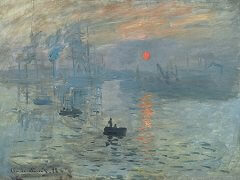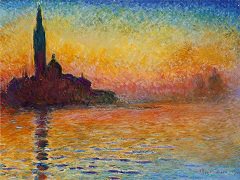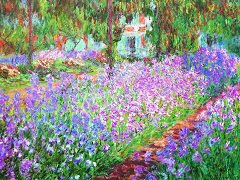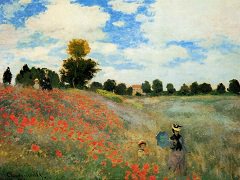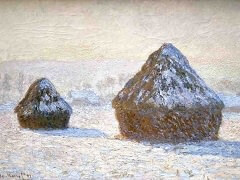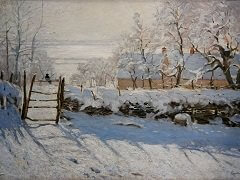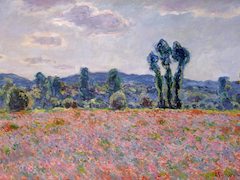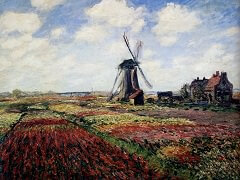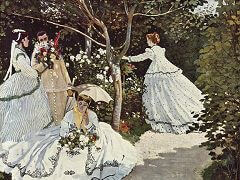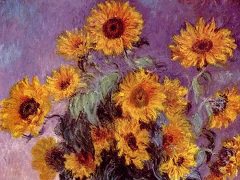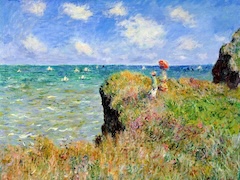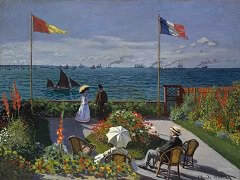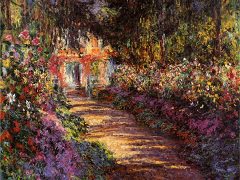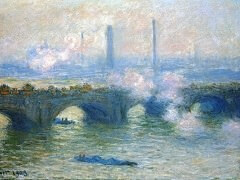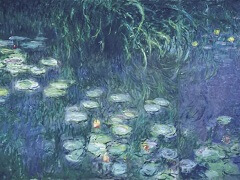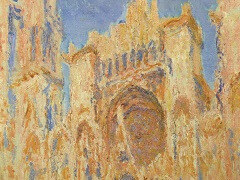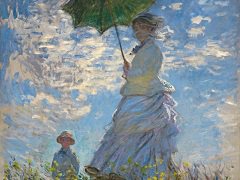Claude Monet and Paul Cézanne
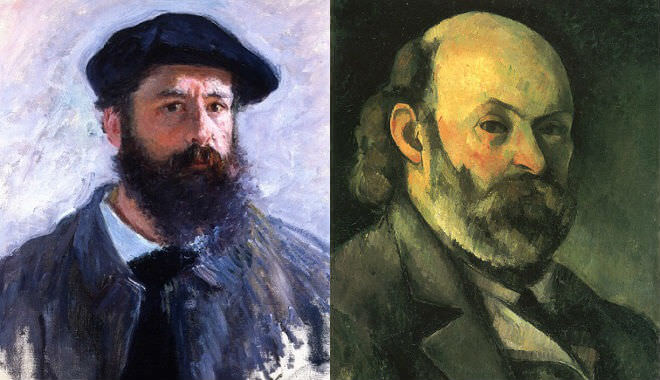
The 20th century not only marked a new beginning in the social, political and economic world, but a time of change in the art world as well. Two revolutionary artists to influence this time period were
Claude Monet and Paul Cézanne, who each found new ways of representing nature, but differed greatly in style.
As one of the great leaders of the Impressionist art movement in France, Monet studied the ways in which outdoor light plays upon nature. His technique was not meant to be very precise - which makes his images most effective when
seen at a distance - yet it is always clear what his paintings are.
Cézanne's paintings, on the other hand, show early evidence of what would eventually be known as the Cubist art movement (which incidentally developed out of a reaction to Impressionism, and lead by another modern master
Picasso). Cézanne was like Monet in that he did not present a clear, concise picture of the world, but he was totally different from Monet in how he went about it.
Prime examples of their work
Monet's painting entitled The Garden of Monet at Argenteuil of 1873 is one of the many perfect landscapes he was known for.
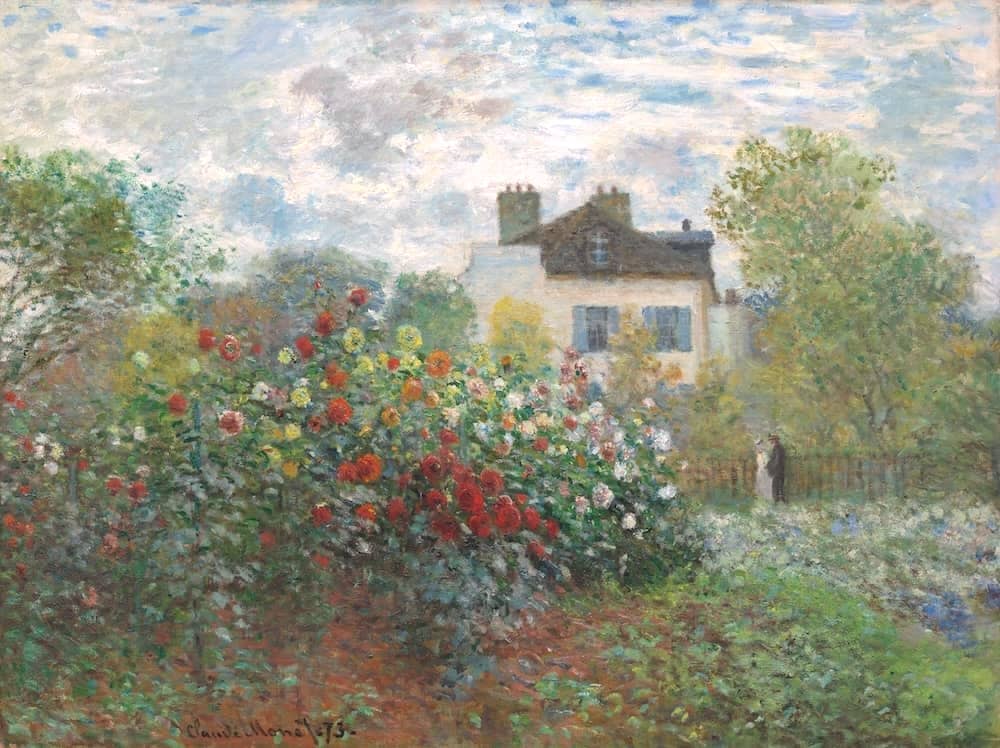
Monet wanted to represent a single moment of light and evoke feelings and emotions about the power of Nature. His deliberate division of subjects also leads the eye naturally from one plane to another - he began with detailed concentration on the flowers in the meadow which lead us into the water of the pond, then to the trees and shrubs in the background, and then into the sky above.
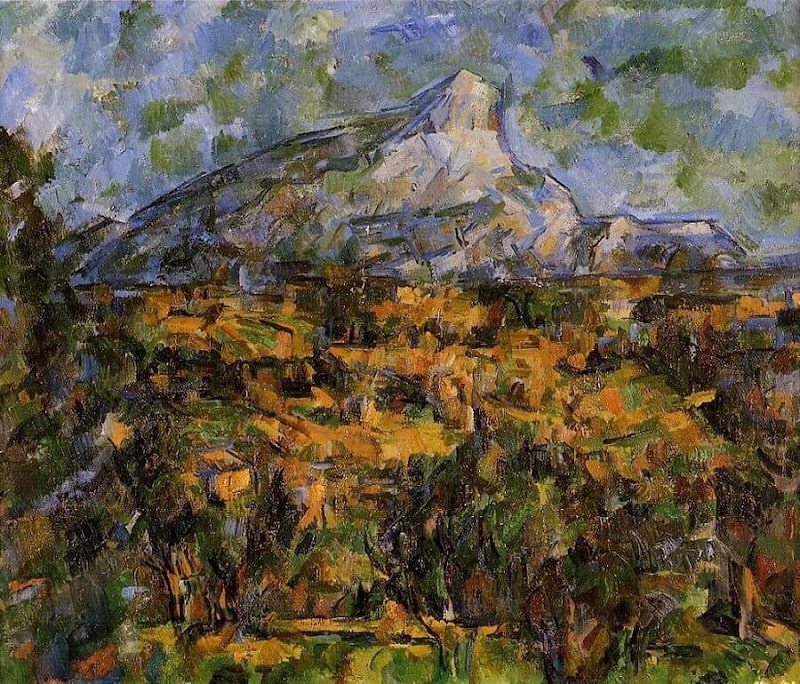
Cézanne's 1904 painting entitled Mont Sainte-Victoire is a landscape as well. It differs from Monet's, however, in that Mont Sainte-Victoire is portrayed in an unnatural manner and without a balanced composition. And while Monet used soft, somewhat pastel-like colors, Cézanne preferred bold, dark, contrasting and striking colors to describe his image.
Comparing Monet and Cézanne's techniques
Monet painted like an Impressionist; the image was carried in his mind before he actually painted it, and is merely suggested to the viewer through a multitude of small, vigorous strokes of pure color. The colors were not
intentionally blended (except as one color meets the other on the canvas) and layers of colors were used to produce the painting's animated effect.
For instance, Monet's Water Lilies consists of many, many layered brush strokes of different colors to show how the outdoor light is reflected from its surface.
In contrast, Cézanne used a more mechanical, uniform technique, and even avoided the intimacy of Impressionism by taking a viewpoint far away from the chateau and peeking through the trees at it.
And while Monet painted in small, vigorous brush strokes all over his canvas, Cézanne painted with large flat brush strokes and dark lines, sometimes giving his paintings a feeling of disorder, and certainly showing us a glimpse
of Cubism with his more basic cube-like shapes.
Art historian always say that Monet was interested in the effect of light on Nature so that he could reveal its pure beauty, while Cézanne was more analytical and calculating, studying Nature to reduce it to its simplest forms.
In the end, Cézanne and Monet both presented inventive and revolutionary ideas of how to capture Nature on canvas - and it was those techniques and philosophies which led the way to Modernism in the art world.

